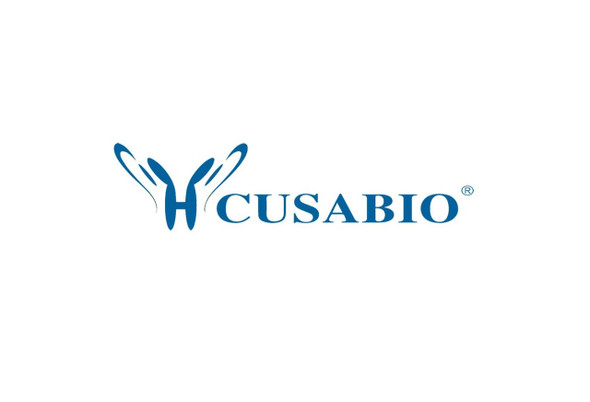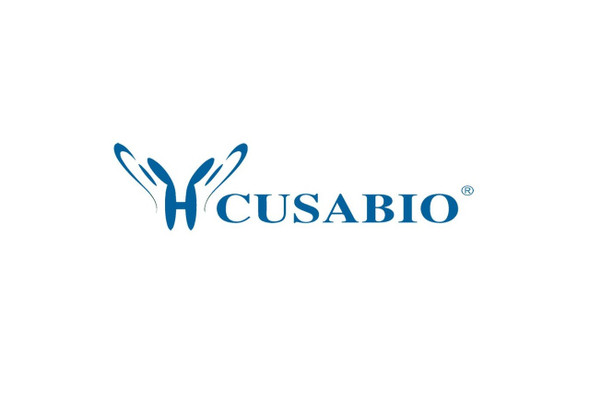Cusabio Human Recombinants
Recombinant Human Complement C4-B (C4B), partial | CSB-EP313364HU
- SKU:
- CSB-EP313364HU
- Availability:
- 3 - 7 Working Days
Description
Recombinant Human Complement C4-B (C4B), partial | CSB-EP313364HU | Cusabio
Alternative Name(s): Basic complement C4C3 and PZP-like alpha-2-macroglobulin domain-containing protein 3
Gene Names: C4B
Research Areas: Immunology
Organism: Homo sapiens (Human)
AA Sequence: EAPKVVEEQESRVHYTVCIWRNGKVGLSGMAIADVTLLSGFHALRADLEKLTSLSDRYVSHFETEGPHVLLYFDSVPTSRECVGFEAVQEVPVGLVQPASATLYDYYNPERRCSVFYGAPSKSRLLATLCSAEVCQCAEGKCPRQRRALERGLQDEDGYRMKFACYYPRVEYGFQVKVLREDSRAAFRLFETKITQVLHFTKDVKAAANQMRNFLVRASCRLRLEPGKEYLIMGLDGATYDLEGHPQYLLDSNSWIEEMPSERLCRSTRQRAACAQLNDFLQEYGTQGCQV
Source: E.coli
Tag Info: N-terminal 6xHis-SUMO-tagged
Expression Region: 1454-1744aa
Sequence Info: Partial
MW: 49.1 kDa
Purity: Greater than 90% as determined by SDS-PAGE.
Relevance: Non-enzymatic component of the C3 and C5 convertases and thus essential for the propagation of the classical complent pathway. Covalently binds to immunoglobulins and immune complexes and enhances the solubilization of immune aggregates and the clearance of IC through CR1 on erythrocytes. C4A isotype is responsible for effective binding to form amide bonds with immune aggregates or protein antigens, while C4B isotype catalyzes the transacylation of the thioester carbonyl group to form ester bonds with carbohydrate antigens.Derived from proteolytic degradation of complent C4, C4a anaphylatoxin is a mediator of local inflammatory process. It induces the contraction of smooth muscle, increases vascular permeability and causes histamine release from mast cells and basophilic leukocytes.
Reference: Identification of N-linked glycoproteins in human saliva by glycoprotein capture and mass spectrometry.Ramachandran P., Boontheung P., Xie Y., Sondej M., Wong D.T., Loo J.A.J. Proteome Res. 5:1493-1503(2006)
Storage: The shelf life is related to many factors, storage state, buffer ingredients, storage temperature and the stability of the protein itself. Generally, the shelf life of liquid form is 6 months at -20?/-80?. The shelf life of lyophilized form is 12 months at -20?/-80?.
Notes: Repeated freezing and thawing is not recommended. Store working aliquots at 4? for up to one week.
Function: Non-enzymatic component of the C3 and C5 convertases and thus essential for the propagation of the classical complement pathway. Covalently binds to immunoglobulins and immune complexes and enhances the solubilization of immune aggregates and the clearance of IC through CR1 on erythrocytes. C4A isotype is responsible for effective binding to form amide bonds with immune aggregates or protein antigens, while C4B isotype catalyzes the transacylation of the thioester carbonyl group to form ester bonds with carbohydrate antigens.; FUNCTION
Involvement in disease: Systemic lupus erythematosus (SLE); Complement component 4B deficiency (C4BD)
Subcellular Location: Secreted, Cell junction, synapse, Cell projection, axon, Cell projection, dendrite
Protein Families:
Tissue Specificity: Complement component C4 is expressed at highest levels in the liver, at moderate levels in the adrenal cortex, adrenal medulla, thyroid gland,and the kidney, and at lowest levels in the heart, ovary, small intestine, thymus, pancreas and spleen. The extra-hepatic sites of expression may be important for the local protection and inflammatory response.
Paythway:
Form: Liquid or Lyophilized powder
Buffer: If the delivery form is liquid, the default storage buffer is Tris/PBS-based buffer, 5%-50% glycerol. If the delivery form is lyophilized powder, the buffer before lyophilization is Tris/PBS-based buffer, 6% Trehalose, pH 8.0.
Reconstitution: We recommend that this vial be briefly centrifuged prior to opening to bring the contents to the bottom. Please reconstitute protein in deionized sterile water to a concentration of 0.1-1.0 mg/mL.We recommend to add 5-50% of glycerol (final concentration) and aliquot for long-term storage at -20?/-80?. Our default final concentration of glycerol is 50%. Customers could use it as reference.
Uniprot ID: P0C0L5
HGNC Database Link: HGNC
UniGene Database Link: UniGene
KEGG Database Link: KEGG
STRING Database Link: STRING
OMIM Database Link: OMIM









